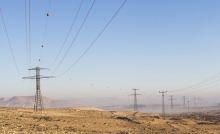
History of Electricity - A Timeline of Innovation and Multiple Key Discoveries
8 June 2015
The history of electricity is an interesting one.
It diagrams various innovations, key discoveries or milestones which collectively have conveyed us to where we are today. Understanding the evolution of the past and where we are today does add to what we ought to be doing going ahead.
One of the first inquiries that arises when we consider the history or evolution of electricity is when electricity was created or discovered and by who? As I would like to think there does not appear to be a reasonable or single answer to this on the grounds that electricity as we probably are aware is a result of different perceptions, innovations or key discoveries that took more than an amazingly drawn out stretch of time.
This timeline starts with the discovery of static electricity, innovation of electric batteries, the ideas of voltage and Ohms law. From that point direct current provided electricity to incandescent lights which was later replaced by exchanging current. This was then distributed to homes on a far reaching basis to address lighting and in the long run appliances.
We consider electricity as far as force stations, lights and the greater part of our electrical appliances, however electricity is an age old force with electrons streaming surrounding us making lightning jolts and static electricity too. Many individuals have contributed over the course of the years to the route in which we utilize electricity today. This article takes a gander at some of those early contributors who we need to thank for giving us the capacity to light our homes and cook our dinners.
The civil argument between Luigi Galvani and Alessandro Volta
In 1768 a medicinal professor named Luigi Galvani found that when he touched the leg of a dead frog with his blade, the frog's leg bounced and jerked which persuaded that electricity was contained within the frog's muscles. With this leap forward test, an entire new sort of electricity was discovered. While beforehand electricity had just been seen to work in sparkles or stuns, here was a kind of electricity that streamed like water.
Michael Faraday
Famed English scientist Michael Faraday can securely assume the praise for bridling and creating electrical currents of a pragmatic size. In 1831, he found that by moving a magnet inside a curl of copper wire, electricity could be made to course through the wire, along these lines electromagnetism was born.
Swan and Edison
Thomas Edison is known the world over thanks to his accomplishments with electricity. His first achievement was his direct current generator, which was the first truly down to earth generator of its kind. Joseph Swan meanwhile, was occupied with working on fiber lights. A talented British scientist he had created the first incandescent fiber light by 1878. Without any information of one another's work, Edison was to design the same thing under one year later. They say incredible personalities think alike, and so Thomas Edison and Joseph Swan chose to consolidate their abilities and begin a company together which would make the world's first viable fiber lights. Edison then went ahead to light his own laboratory with his unique DC generator and lights, and consequently, drove the entire world in lighting our homes electrically. He worked principally with direct current electricity then again, and some criticism this as DC force was seen to have some genuine shortcomings.
The last indicate highlight is the trip or evolution of discoveries and innovations which have driven us to where we are today will probably keep going ahead. This suggests that on-going utilization of vitality sources ought to be adjusted, new or enhanced advancements that streamline electricity will in a perfect world be conveyed. The expanded mindfulness today on vitality preservation and renewable vitality sources ought to go about as an in number impetus towards significantly further development over the advancing years.
News
10 February 2021
OTDS have completed manufacture of 4 shunt reactors and voltage...





.jpg)